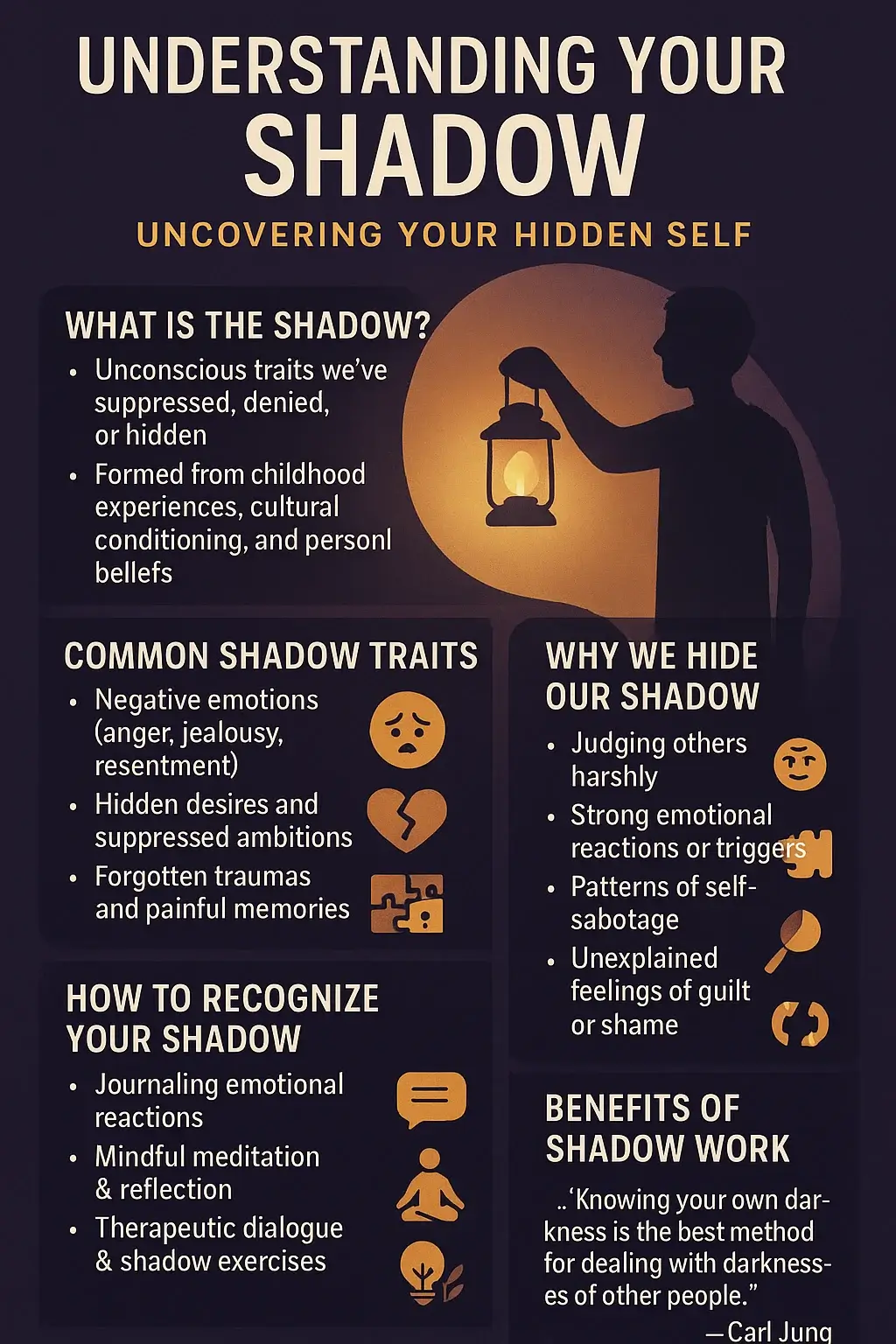- Understanding the ‘Shadow’: Revealing the Hidden Parts of Yourself
- Meeting Your Shadow: Identifying and Embracing Your Hidden Traits
Welcome back! In our journey exploring shadow work, today we focus on understanding exactly what your “shadow” is. The shadow, a concept pioneered by Swiss psychiatrist Carl Jung, represents the unconscious parts of our personality—the traits, emotions, and desires that we’ve suppressed, denied, or rejected.
What Exactly is the Shadow?
The shadow encompasses everything within us that we hide from others, and often from ourselves. This can include:
- Negative emotions like anger, jealousy, resentment, or greed.
- Socially unacceptable desires or impulses.
- Forgotten traumas and painful memories.
- Positive aspects such as hidden talents, creativity, or ambition that we’ve suppressed due to societal pressures or self-doubt.
The shadow forms from childhood experiences, cultural conditioning, and personal beliefs, shaping our behaviors, decisions, and relationships—often without our awareness.
Why We Suppress Our Shadow
We suppress our shadow primarily because of fear—fear of judgment, rejection, or shame. Society, families, and peer groups reinforce what’s acceptable and what’s not, prompting us to hide aspects of ourselves deemed undesirable. However, suppression doesn’t eliminate these traits. Instead, they manifest unconsciously, influencing our lives in profound ways.
Recognizing Your Shadow
Identifying your shadow begins with introspection. Common signs of a suppressed shadow include:
- Excessive judgment of others.
- Strong reactions or emotional triggers to certain situations or people.
- Patterns of self-sabotage or repetitive negative behavior.
- Feelings of guilt or shame without clear reasons.
Integrating Your Shadow
Integration involves acknowledging these hidden parts and embracing them consciously. This doesn’t mean indulging in negative behaviors; rather, it’s about awareness and acceptance, allowing you to manage and transform these traits constructively.
Effective practices for shadow integration include:
- Journaling regularly about your emotional reactions and triggers.
- Mindful meditation and self-reflection.
- Engaging in therapeutic dialogues or shadow work exercises.
Benefits of Understanding Your Shadow
When you recognize and integrate your shadow, you:
- Enhance self-awareness and emotional resilience.
- Improve relationships by reducing unconscious reactions.
- Unlock hidden creativity, talents, and personal power.
- Achieve greater inner peace and authentic self-expression.
Embark on Your Journey
Understanding your shadow is crucial for personal growth and genuine transformation. By bravely facing these hidden parts, you illuminate the path toward living a more balanced, conscious, and fulfilling life.
Ready to delve deeper? Stay tuned—our journey is just beginning.

